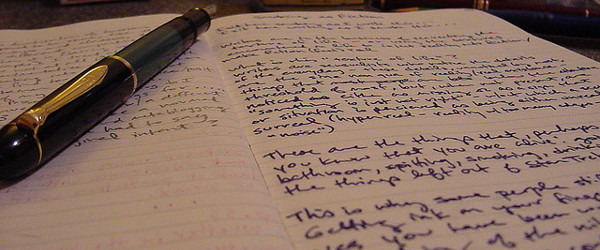We have all been to awful talks—hours of slides crammed with data, given by presenters who assume you know as much as they do. But hopefully you’ve also seen a great scientific talk. A talk in which you’re walked through a story, eagerly anticipating each question and data point, until you finally reach a conclusion that changes how you think about the field. We all want to give the second talk, but it can be hard to pinpoint the factors that contribute to a successful and engaging presentation.
Here are some things to consider as you’re putting together your slide deck.
Tell a Story
As scientists, we love data. But as humans, we love stories. Sometimes, we get caught up in the data and forget to tell the story. One of the key components of a great scientific talk is a great narrative. Your science should follow a logical progression, and you should help your audience to follow that logical progression.
- For each figure you show, say why you wanted to do the experiment, then tell them what you did, what you learned, and what new questions that opened for you. This helps the audience understand not only the data, but the context and reasoning behind the data.
- Don’t assume your audience knows anything—even if you’re giving a talk to a group of specialists in your field. Be clear about the assays, axes on your graphs, and readouts you’re using. Walk your audience through each figure so they know exactly what to look at.
- Whenever possible, remind your audience of the bigger picture. Every few slides or pieces of data, center your audience by reminding them how that fits into the story you’re telling or the bigger question you’re to answering.
Design With Purpose
Powerpoint slides can be a great tool or a great hindrance. Bad slides can take many forms, but there are few cardinal rules to help you to tell your story and give a great scientific talk.
- Avoid cramming everything into one slide. What may be one figure in a paper is usually better presented as individual panels in a powerpoint presentation. The same thing goes for complicated pathways. If you need to, play around with animating particular parts to appear when you need them. But do it tastefully, otherwise your audience will be distracted by the bouncing pictures instead of the information.
- In general, fewer words are better in a great scientific talk. If you put up a wall of text, you will lose your audience as they try to read what you wrote instead of listening to what you’re saying. Consider every word carefully to help your audience understand what they should be getting out of each slide. Use descriptive slide titles to help your audience follow the story even if they don’t understand the data.
- A picture is worth a thousand words: instead of explaining a pathway, show a pathway. Make a quick figure to show a signaling cascade, experimental flow or protein interaction; the visuals help your audience grasp what you’re saying.
Practice, But Don’t Make It Perfect
Yes, yes, I know, you’ve heard it a thousand times: practice, practice, practice. While this seems like a no-brainer, it is important to practice more than just the words you’re planning on saying.
- Practice your pacing. I personally tend to rush through my slides when I’m nervous. Practice the words you want to say at the speed you want to say them—pauses and silence are okay, too! Remember that what seems like eons to us is only a few seconds to the audience.
- Pay attention to your body language. Don’t hide behind a podium or your laptop. Present yourself as open and confident to instantly increase your audience’s interest in your talk. Don’t cross your arms or turn your back to the audience. Remember to make eye contact around the room, and don’t forget to smile!
- Practice your enthusiasm. To to get your audience interested in your talk, you have to be interested in your talk. Don’t put an exclamation point next to every piece of data, but show your excitment when you talk about a particularly remarkable result and your audience will be interested, too.
- DON’T make it perfect. Don’t memorize your talk—it will come off as robotic and scripted. Use your presentation as a tool to help you discuss your points, but don’t become tied to a particular script. That’s because if you get distracted from your memorized talk (for example, someone asks a question), then you could easily get lost and flustered. It’s better to be familiar with your topic and the points you want to get across.
These tips should help you make a presentation that wows instead of bores your audience. What advice do you have for giving a great presentation?





